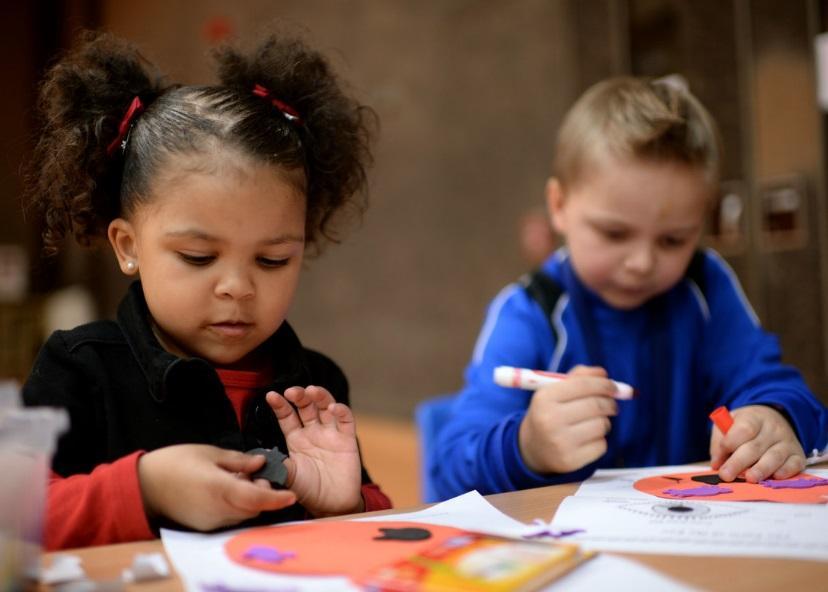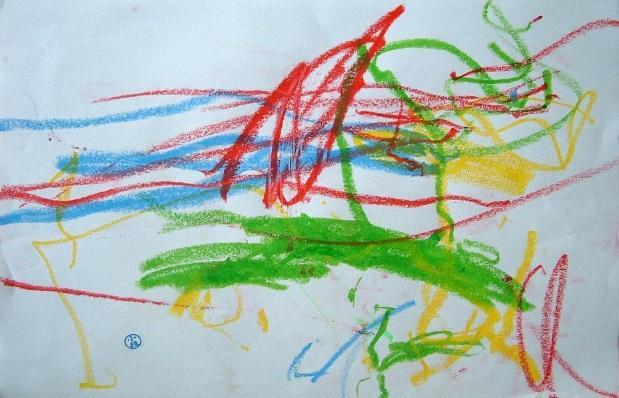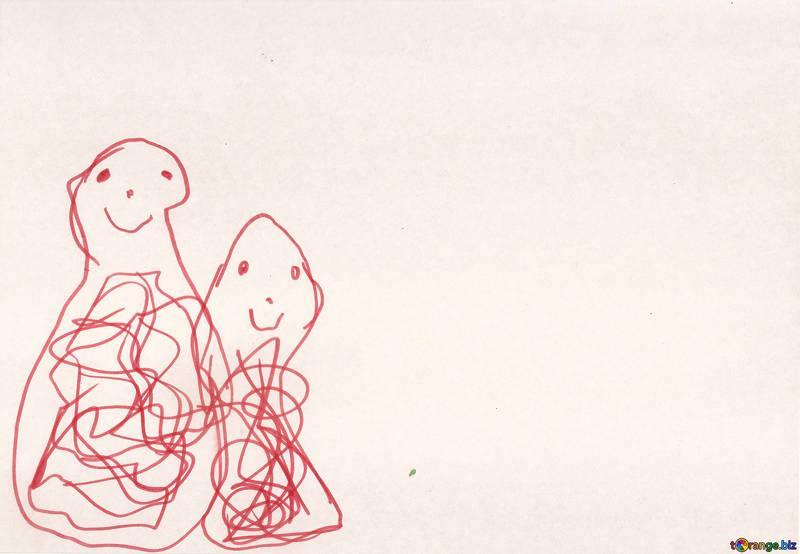7.13 Motor Development
The preschool years are notorious for much motor skill refinement. Preschoolers are especially attracted to motion and song. Days are filled with jumping, running, swinging and clapping. They turn every space into a playground. Whether climbing up a chair at the dining table or sliding underneath a booth at a restaurant. Of course, this can be frustrating to a caregiver, but it’s the business of children at this stage.
7.13.1 Gross Motor Skills
Children continue to improve their gross motor skills and their jumping, running, and kicking of a ball become more skilled. Caregivers are frequently asked to “look at me” while they hop or roll down a hill. Children’s songs are often accompanied by arm and leg movements or cues to turn around or move from left to right.
Table 7.3 shows the progression of gross motor skills that children will typically develop during early childhood.
Table 7.3. Gross Motor Milestones.
|
Typical Age |
What Most Children Do by This Age |
|
3 years |
|
|
4 years |
|
|
5 years |
|
There are many activities focused on play that young children enjoy and that support their gross motor skill development, including:
- Tricycle
- Slides
- Swings
- Sit-n-Spin
- Mini trampoline
- Bowling pins (can use plastic soda bottles also)
- Tent (try throwing blankets over chairs and other furniture to make a fort)
- Playground ladders
- Suspension bridge on playground
- Tunnels (try throwing a bean bag chair underneath for greater challenge)
- Ball play (kick, throw, and catch)
- Simon Says
- Target games with bean bags and balls
- Dancing/moving to music
- Pushing self on scooter or skateboard while on stomach

Figure 7.4. Children riding tricycles together.
7.13.2 Fine Motor Skills
Fine motor skills are also being refined as children continue to develop more dexterity, strength, and endurance. Fine motor skills are very important as they are foundational to self-help skills like tying a shoelace and later academic abilities such as writing.
Table 7.4 shows how fine motor skills progress during early childhood for children that are typically developing.
Table 7.4. Fine Motor Milestones.
|
Typical Age |
What Most Children Do by This Age |
|
3 years |
|
|
4 years |
|
|
5 years |
|
Here are some fun activities that will help children continue to refine their fine motor abilities. Fine motor skills are slower to develop than gross motor skills, so it is important to have age-appropriate expectations and play-based activities for children, such as:
- Pouring water into a container
- Drawing and coloring
- Using scissors
- Finger painting
- Fingerplays and songs (such as the Itsy, Bitsy Spider)
- Play dough
- Lacing and beading
- Practicing with large tweezers, tongs, and eye droppers

Figure 7.5. Children coloring.
The development of visual pathways are represented in changes in children’s drawings (Figure 7.5). As the brain of a child matures, the images in their drawings become more detailed as they expand their ability to visualize in their head what they are creating on paper. For example, children practice simple motor skills by drawing scribbles and dots initially, without connecting an image being visualized to the scribbles created on the paper (Figure 7.6). However, by about age 3, the child begins to draw creatures with heads but not much other details (Figure 7.7). Gradually, pictures begin to have more details such as arms and faces with a nose, lips, and eventually eyelashes (Figure 7.8).
|
Figure 7.6. Early scribbles. |
Figure 7.7. Creatures with heads. |
Figure 7.8. A detailed face. |
7.13.3 Licenses and Attributions for Motor Development
“Motor Development” from Child Growth and Development Authored and compiled by Jennifer Paris, Antoinette Ricardo, & Dawn Rymond is licensed under CC BY 4.0; minor edits.
Table 7.3. “Developmental Milestones” by the CDC is licensed under CC0 Public Domain.
Table 7.4. “Developmental Milestones” by the CDC is licensed under CC0 Public Domain.
Figure 7.4. Image by Hanscom Air Force Base is licensed under CC0 Public Domain.
Figure 7.5. “Health fair Promotes Culture of Personal Responsibility” by Spangdahlem Air Base is licensed under CC0 Public Domain.
Figure 7.6. Image by Wikimedia is licensed under CC BY-SA 3.0.
Figure 7.7. Image by torange.biz is Licensed under CC-BY 4.0.
Figure 7.8. Image by torange.biz is Licensed under CC-BY 4.0.



